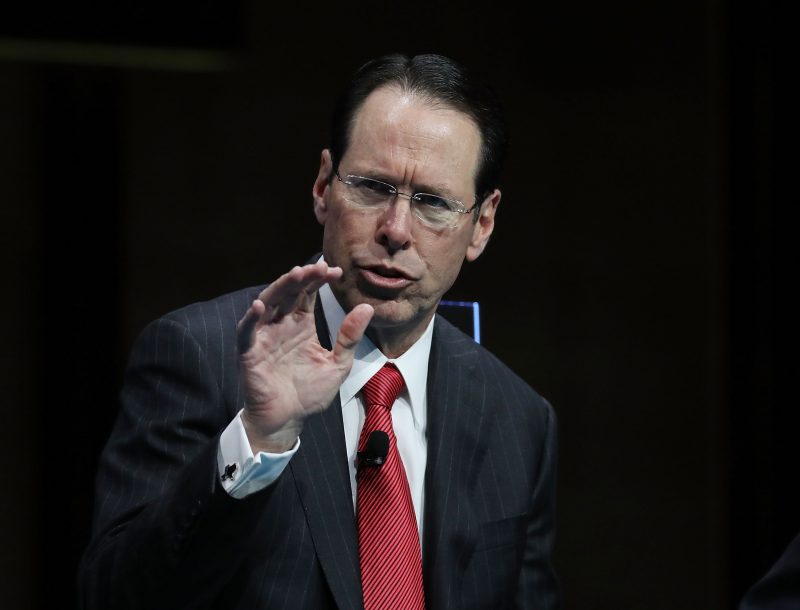AT&T wins appeal on Time Warner merger, ending legal battle
Randall Stephenson, chairman and CEO of AT&T, engineered the takeover of media-entertainment giant Time Warner, a deal upheld by a US appeals court (MARK WILSON)
Washington (AFP) – A US appeals court affirmed the mega-merger AT&T and Time Warner on Tuesday, rejecting an effort by President Donald Trump’s administration to block the deal between the telecom and media-entertainment giants.
The US Department of Justice said after the ruling it would not pursue any further appeal, ending the long-running, politically charged antitrust case.
In its unanimous ruling, the three-judge appellate panel said the government’s case failed to consider that the industry had become “dynamic in recent years” with the emergence of online services such as Netflix and Hulu.
The $85 billion deal brought together AT&T’s wireless and broadband networks and its DirecTV subscription service with the media assets of Time Warner, which include CNN and other Turner cable channels, the Cartoon Network, premium channel HBO and the Warner Bros. movie studio.
The government filed the high-profile antitrust case in late 2017, claiming the deal would give AT&T too much power in the market for pay television and home entertainment.
Last year, US District Judge Richard Leon ruled that the government had failed to show the deal would harm competition.
The appellate court opinion by Judge Judith Rogers affirmed Leon’s decision, saying the industry is undergoing massive changes led by on-demand video services and rivals offering small packages of channels — known as “skinny bundles.”
The appellate panel said the Justice Department “failed to meet its burden of proof” showing that pay TV costs would rise for consumers.
The tie-up was completed shortly after the lower court ruling, and if the Justice Department appeal had prevailed it could in theory have required an unwinding or divestment.
– Changing landscape –
AT&T, which renamed the entertainment unit as WarnerMedia after finalizing the deal, welcomed Tuesday’s ruling.
“The merger of these innovative companies has already yielded significant consumer benefits, and it will continue to do so for years to come,” AT&T’s general counsel David McAtee said in a statement.
AT&T and others had argued the government brought the case because of Trump’s dislike of CNN — a frequent target of White House claims of “fake news” — but the courts declined to hear any evidence on political motivation.
The case had been closely watched as setting a benchmark for other big corporate mergers, especially in the media and communications sector. The tie-up comes amid a shifting media landscape, including a mega-deal that gives Walt Disney Co. the main media-entertainment assets of 21st Century Fox.
AT&T argued the deal should not raise antitrust concerns because it was a “vertical” merger of companies not competing against each other, and thus not impacting market share.
The government argued the combination would give the companies the power to deny key programs to rivals and ultimately increase prices to consumers.
The lower court ruling said the government’s claim that pay TV costs would rise from the tie-up was based on “speculative” logic and that its study from an expert witness was contradicted by other evidence from the government.
Justice Department spokesman Jeremy Edwards said in a statement that the agency “has no plans to seek further review.”
The consumer group Public Knowledge, which opposed the merger, expressed disappointment over the appellate ruling but said it should not pre-empt similar actions on vertical mergers.
“The opinion should not be read as a broad endorsement of Judge Leon’s rose-colored view of the video marketplace, and it provides guidance for how the government can successfully challenge future anticompetitive vertical mergers,” said John Bergmayer, senior counsel for the group.
Disclaimer: This story is published from a syndicated feed. Siliconeer does not assume any liability for the above story. Validity of the above story is for 7 Days from original date of publishing. Content copyright AFP.


